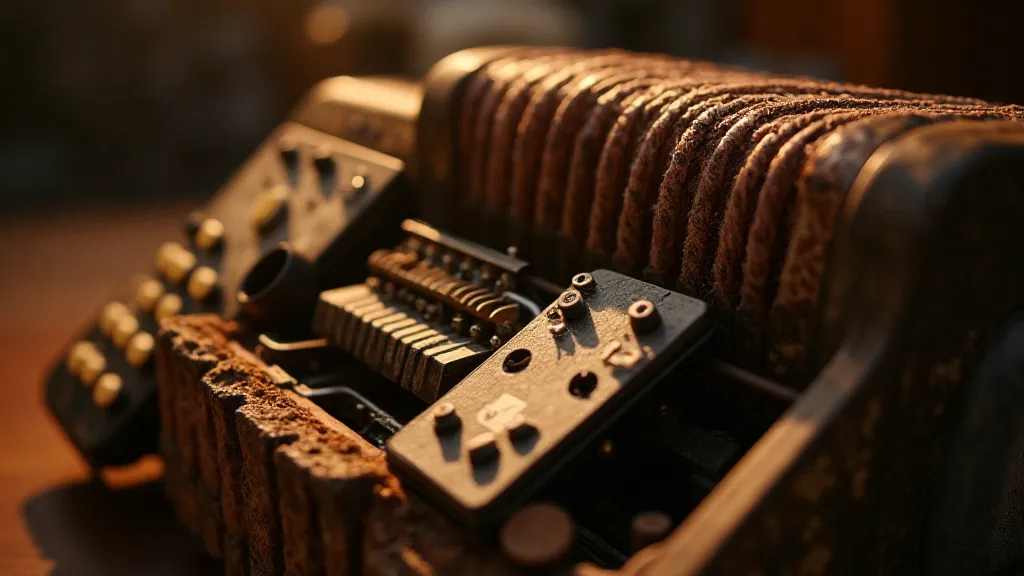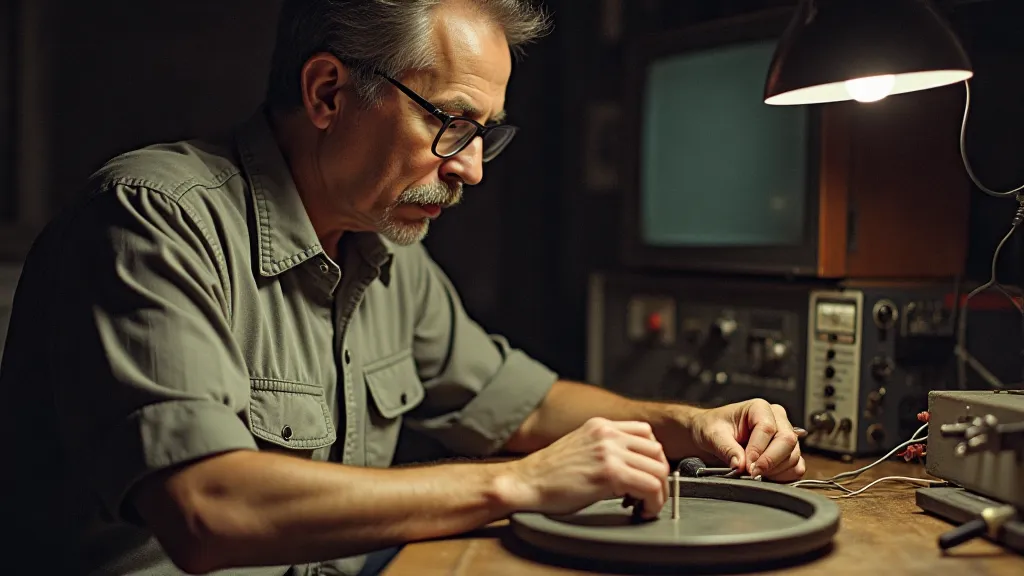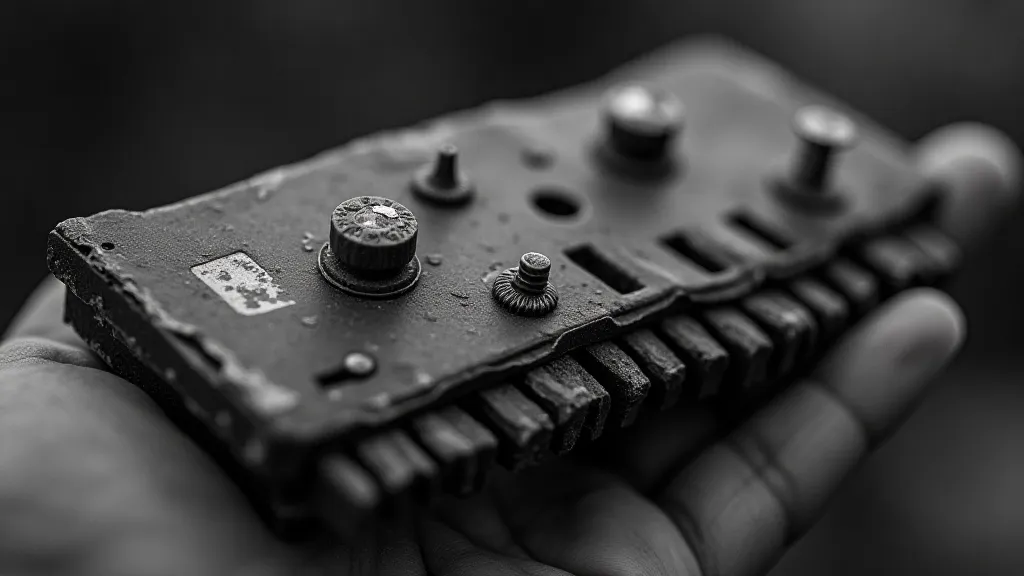The Language of Loops: Exploring Different Antenna Configurations
There’s a certain poetry to radio waves, a silent conversation rippling through the ether. It's a language that speaks across continents, binds communities, and connects us to voices far beyond our immediate reach. Building a ham radio transceiver – the device that both transmits and receives these waves – is a deeply satisfying experience, a return to a more tangible form of communication. But the transceiver is only half the story. The antenna, the device that converts electrical signals into radio waves and vice versa, is equally vital. And understanding the nuances of antenna configurations is key to maximizing your reach and clarity.
My fascination with antennas began, strangely enough, with accordions. My grandfather, a taciturn man of few words, played one. Not a modern, electronic behemoth, but a beautifully crafted Hohner Master 270 from the 1950s. The bellows, the reeds, the intricate key mechanisms… everything was a testament to meticulous craftsmanship. He’s gone now, but I remember the feeling of reverence I’d have watching him play, the way his fingers danced across the keys, drawing forth music that felt ancient and resonant. The accordion, like an antenna, is about taking a small input – the breath, the pressure – and transforming it into something far grander, more complex, and capable of reaching a wider audience. That same principle – efficient energy transfer – applies beautifully to antennas.

The Humble Dipole: A Foundation for Understanding
Let’s start with the dipole. It’s the workhorse of amateur radio, the foundational element for so many other designs. Essentially, it's two lengths of wire, fed from the center and balanced. It radiates well in all directions perpendicular to its axis, making it a good general-purpose antenna. The length of the dipole is directly related to the frequency it's designed to work on. A half-wave dipole – where each leg is a quarter of the wavelength – is the most common configuration. Simplicity is its biggest advantage; it’s relatively easy to construct and requires minimal components. However, its performance isn't directional; signals will be received and transmitted equally in all directions, which can be both an advantage (good for local communication) and a disadvantage (picking up more noise). Think of it as a friendly wave, reaching out to everyone nearby – but also catching every bit of chatter in the surrounding area.
Loop Antennas: Focusing Your Signal
Now, let’s move to loop antennas. These are where the artistry becomes more apparent. They come in various shapes: squares, triangles, even circles. A small loop antenna, significantly smaller than the wavelength, acts as a magnetic antenna. It’s incredibly directional, picking up signals from a specific direction while rejecting others. This is a huge benefit in noisy environments, allowing you to filter out unwanted interference. Larger loops, approaching a full wavelength, behave more like balanced dipoles, but with improved gain and a more predictable radiation pattern. The beauty of loop antennas lies in their ability to be tailored to specific situations. You can use them to focus your signal towards a particular location or to reject interference from a known source. The careful winding of the wire, the precise alignment of the loop – these details matter. Like the careful tuning of a reed in an accordion, they influence the final result. Understanding the specific frequencies you’re aiming for is crucial, and the broader science of radio frequencies is fascinating; it's a topic explored in more detail in The Cartographer of Radio Frequencies: Understanding the Spectrum Landscape.

The Yagi-Uda: Directional Powerhouse
Next, we have the Yagi-Uda. This is the "big gun" of directional antennas. It consists of a driven element (often a dipole) and multiple parasitic elements (reflectors and directors) arranged along a boom. The directors, slightly shorter than the wavelength, focus the signal forward. The reflectors, longer than the wavelength, bounce the signal back towards the driven element, increasing its strength. Yagis offer very high gain and a very narrow beamwidth, making them ideal for long-distance communication. They are, however, more complex to build and require careful alignment. The length and spacing of each element are critical for optimal performance. It’s like a carefully orchestrated ensemble, each instrument playing its part to create a powerful and focused sound. There's a certain elegance to a well-constructed Yagi-Uda, a testament to engineering precision. The challenges in building such a precise system demand patience, and achieving success often involves overcoming significant obstacles, a theme covered in The Patience of Persistence: Overcoming Challenges in DIY Radio.
Beyond the Antenna: Construction, Grounding, and Cable Loss
Choosing the right antenna isn't just about technical specifications; it's about understanding your needs and limitations. Are you primarily interested in local communication? A simple dipole might be all you need. Are you trying to reach across continents? A Yagi-Uda is likely your best bet. Do you live in a noisy urban environment? A loop antenna can help you filter out interference. Building a transceiver, whether it’s a sophisticated Yagi-Uda or a simple dipole, isn’t always straightforward. Following a careful plan and meticulous design is essential for a successful outcome, which is detailed in From Blueprint to Broadcast: A Step-by-Step Journey of Transceiver Creation.
Beyond the antenna itself, the coaxial cable connecting your transceiver to the antenna is also crucial. Losses in the cable can significantly reduce your signal strength. Using high-quality cable and minimizing cable length is essential. The type of cable used and its impact on signal integrity contribute to the complexities of radio transmission. The grounding of your equipment is also vital for safety and performance. A good ground reduces noise and protects your equipment from damage. The precise mathematical relationships governing these phenomena are fascinating and contribute to the overall ‘geometry’ of how signals behave; the science of this is explored in greater detail elsewhere.
The Resonance of Craftsmanship and Innovation
Restoring a vintage accordion, like building a ham radio transceiver, is more than just a technical exercise. It’s a connection to the past, a chance to appreciate the skill and artistry of those who came before us. The attention to detail, the pursuit of perfection – these qualities are timeless. Whether you’re tuning a reed or optimizing an antenna, you’re engaging in a process of refinement, striving to achieve the best possible performance. This pursuit of optimal performance requires a deep understanding of the underlying scientific principles, the intricate dance between electricity and magnetism that allows us to transmit information across vast distances. The mathematics involved, the precise calculations needed to ensure efficient signal propagation, all contribute to the elegance and beauty of radio technology. Indeed, the entire subject of radio waves and signal propagation can be viewed as a complex and beautiful “Geometry of Signals: Antenna Design and the Dance of Electromagnetic Waves.”

Consider the accordion itself: its bellows meticulously folded, its reeds precisely shaped, its keys accurately positioned. Each component plays a vital role in the overall performance of the instrument, just as each element in an antenna contributes to its ability to radiate and receive signals effectively. The craftsmanship involved in building both is a testament to human ingenuity and a desire to create something beautiful and functional. This intersection of art and science, the marriage of mechanical precision and electromagnetic principles, is what makes amateur radio so rewarding. It’s a journey of discovery, a quest for knowledge, and a celebration of human creativity.
And just as a skilled accordionist can coax a rich and resonant sound from a vintage instrument, so too can an experienced radio operator can squeeze every ounce of performance from their equipment. It requires practice, dedication, and a willingness to experiment. But the rewards are well worth the effort. The ability to communicate with people around the world, to share experiences and ideas, to build connections across cultures – these are the privileges of the amateur radio community. It's a world of shared passion, mutual support, and a commitment to pushing the boundaries of what's possible.





